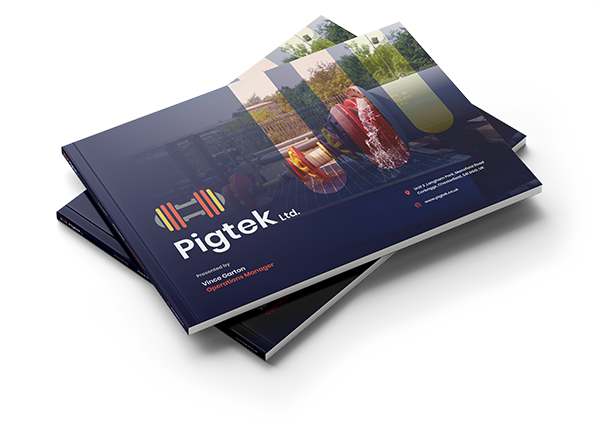Natural Gas Pipeline Pigging: Your Essential Guide to Safety
In the oil and gas sector, the integrity and cleanliness of pipelines are of paramount importance to ensure smooth operations and avert potential disasters.
Natural gas pipeline pigging is a vital procedure in the context of safety and efficiency.
This comprehensive guide delves into the intricacies of pipeline pigging, its significance, types of pipeline pigs, and the inherent safety measures involved.
Authored by Pigtek, a global leader offering specialist pigging products and services, this guide provides an insightful perspective backed by industry expertise.
What is Natural Gas Pipeline Pigging?
Natural gas pipeline pigging refers to the process of using specialised devices known as “pigs” to conduct cleaning, inspection, or maintenance operations within pipelines.
The term “pigging” is derived from the squealing sound early models of these devices made while navigating through pipelines.
The primary function of pigging is to ensure the unhindered flow of gas and prevent potential hazards due to debris accumulation, corrosion, or fractures within the pipeline.
The Importance of Pipeline Pigging
An integral part of the upstream, midstream, and downstream operations in the oil and gas industry, pigging ensures that gas pipelines remain free from obstructions, thereby assuring optimal flow integrity.
It also aids in inspecting the internal sections of pipelines to plan for necessary remedial operations.
However, due to the hazardous nature of the operation, only competent professionals should carry out pipeline pigging.
Key Purposes of Pipeline Pigging
Pipeline pigging serves several essential purposes:
- Maintains Cleanliness: Consistent pigging keeps pipelines free from debris and other obstructions which could negatively affect the flow of gas.
- Ensures Flow Integrity: By cleaning the gas pipeline, pigging ensures the optimal flow of gas, thus enhancing the overall efficiency of the pipeline operations.
- Facilitates Inspection: Pigs equipped with various sensors can inspect the internal sections of pipelines, helping identify potential issues that may require remedial actions.
The Pipeline Pigging Procedure
The pigging operation primarily involves three components: the pig, a launcher, and a receiver.
The pig, a cylindrical device, travels through the pipeline, propelled by the force of the gas flowing through the pipe.
The pig launcher releases the pig from one end of the pipeline, and the receiver retrieves it at the other end.
It’s essential to note that this operation could be potentially hazardous and therefore should be executed only by trained professionals.
Different Types of Pipeline Pigs
Selecting the right type of pipeline pig is crucial for effective results. The common types of pipeline pigs used in the oil and gas industry are:
Utility Pigs
Utility pigs are primarily used for the cleaning, dewatering, and sealing of gas pipelines.
They sweep through the internal section of the pipeline, removing debris and semi-solids that obstruct or limit the flow of gas. They can be further categorised into:
- Mandrel Pigs: These comprise a steel mandrel body with replaceable cups and discs (sealing elements). They are cost-effective as the worn-out components can be replaced, resulting in a rejuvenated pig.
- Solid Cast Pigs: These are made up of a single piece of polyurethane polymer.
- Foam Pigs: These are a mix of polymer foam and can be embedded with abrasive materials.
- Spherical Pigs: These are solid or hollow, spherical balls made from polyurethane or neoprene. They are usually inflatable and filled with liquids such as glycol or water to maintain their shape under high pressures within gas pipelines.
Gel Pigs
Gel pigs, comprising chemical substances like rigid polymers and high-viscosity gels, are generally used during pipeline commissioning or maintenance.
They are the perfect choice for “unpiggable” lines—pipelines with internal valves, sharp bends, or special structures that could result in a stuck pig.
Inspection Pigs
Also known as “smart pigs,” these are used for inspecting the internal sections of gas pipelines.
They are equipped with electronic components like ultrasonic sensors, RF modules, and gauge plates, which can measure parameters such as diameter, curvature, thickness, pressure, metal loss, and temperature.
Speciality Pigs
Also called “plugs,” these are used to seal off entire sections of pipelines during remedial activities.
They facilitate pipeline cleaning without completely restricting the flow of fluids through them.
Safety Measures in Pipeline Pigging
Given the potential risks associated with pipeline pigging, adopting stringent safety measures is crucial.
Prior to the pigging operation, comprehensive checks must be made on parts like the intake valve and the exhaust valve.
During the operation, the speed of the pig must be controlled to ensure it can be recovered safely.
Moreover, before the pig is recovered into the cylinder, it is replaced with nitrogen to reduce the pressure difference, further enhancing safety.
The Role of Pigtek
Pigtek, as an industry leader, has continually strived to enhance the safety and efficiency of pipeline pigging operations.
With a 100% focus on pipeline pigging and associated equipment, Pigtek provides solutions even when “standard” equipment falls short.
By leveraging their deep industry expertise, Pigtek is a trusted partner in addressing complex industrial problems and ensuring the safe and smooth operation of your gas pipeline.
Pipeline pigging is an essential process in the natural gas industry that ensures the safety, cleanliness, and efficiency of pipeline operations.
By employing the right type of pig and following stringent safety measures, potential hazards can be averted, ensuring the uninterrupted flow of gas.
With industry leaders like Pigtek providing customised pigging solutions, the process becomes smooth and secure, reinforcing the importance of natural gas pipeline pigging in the oil and gas industry.
To learn more about our services or request a quote, contact us today.
 Pigtek Ltd
Pigtek Ltd





